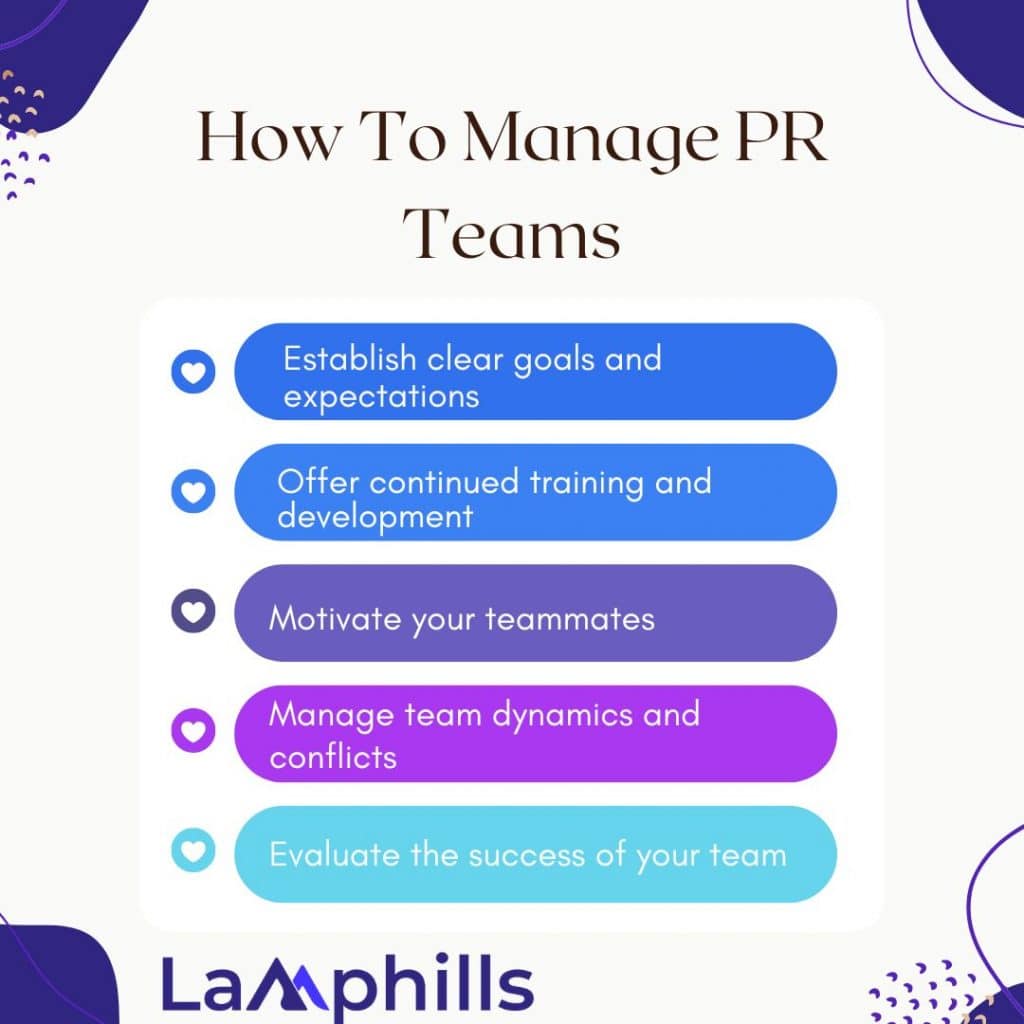Do you remember when you noticed your startup was gaining traction? I do. It was a beautiful afternoon, and our small office was alive with activity as our team huddled around my desk. We recently received an email from a prominent technology journal interested in highlighting our product. That was the turning point. Our unusual PR team’s strategy had finally paid off. In this essay, I’ll explain the ideas that propelled our startup to success, with a focus on tactics that most websites overlook. This isn’t simply another public relations team handbook; it’s a story of trial and error that led to eventual success.
What is a Public Relations Team?
A Public Relations (PR) team is a group of experts within a business who work to manage and improve the organization’s reputation. The PR team’s major mission is to strategically engage with various stakeholders, such as the public, media, employees, and investors, to shape good perceptions and promote the organization’s goals.
Who Makes Up a Public Relations Team?
#1. PR Manager/Director
- Leads the PR team, develops strategy, and collaborates with top executives.
- Responsibilities include strategic planning, decision-making, and oversight of the total public relations department.
#2. Media Relations Specialist
Establish ties with media outlets and oversee the organization’s dealings with the press.
Write press releases, pitch stories, and plan media events.
#3. Corporate Communication Specialists
- Manage internal and external communication while ensuring consistent messaging.
- Responsibilities: Create communications strategy, manage internal newsletters, and guarantee communication coherence.
#4. Social Media Managers
- Role: Oversee the organization’s presence on social media channels.
- Responsibilities include creating content, engaging with the audience, and running social media initiatives.
#5. Crisis Communication Specialists
- Role: Specializing in crisis communication management.
- Responsibilities include creating crisis plans, coordinating responses, and providing accurate information during catastrophes.
#6. Event Coordinators
- Role: Plan and execute promotional events for the organization.
- Responsibilities include managing logistics, inviting stakeholders, and ensuring that events correspond with the PR strategy.
#7. Content Creators and Writers
- Role: Create written content for various PR materials.
- Responsibilities include writing press releases, speeches, articles, and blogs to express critical messages.
#8. Community Relations Specialists
- Role: Develop relationships with the local community.
- Responsibilities include representing the organization at community events, connecting with local stakeholders, and coordinating outreach activities.
#9. Measurement and analytics specialists
- Role: Use statistics to assess the effectiveness of public relations operations.
- Responsibilities: Use metrics to evaluate the success of public relations programs and provide data-driven insights.
#10. Government Relations/Public Affairs Specialists
- Role: Oversee interactions with government agencies.
- Responsibilities include monitoring legislative concerns, communicating the organization’s opinion, and developing constructive connections with lawmakers.
How is a Public Relations Team Structured in an Organization?
A PR team’s structure varies depending on the organization’s size and needs. In larger firms, there may be a hierarchy with a PR Director supervising numerous specialists, however, in smaller organizations, a single PR professional may manage multiple jobs.
Here is a typical hierarchical structure of a public relations team.
| Level | Designation |
| Top Leadership | Chief Communications Officer (CCO) / PR Director |
| Second Layer Management | PR Managers / Team Leads |
| Third Layer Specialists | Media Relations Manager |
| Content Creation Manager | |
| Community Engagement Manager | |
| Government Relations Specialist | |
| Social Media Manager | |
| Crisis Communication Specialist | |
| Analytics and Measurement Specialist | |
| Fourth Layer Coordinators | Media Relations Specialists |
| Content Creators/Strategists | |
| Community Engagement Specialists | |
| Government Relations/Public Affairs Specialists | |
| Social Media Coordinators | |
| Crisis Communication Specialists | |
| Analytics and Measurement Specialists | |
| Bottom Layer | Interns (Paid/Unpaid) |
What Are the Goals and Strategies of a Public Relations Team?
Goals
- Develop and maintain a positive public image.
- Develop positive ties with stakeholders.
- Manage crisis situations effectively.
- Maintain transparent and constant communication.
Strategies
- Create intriguing narratives and important messages.
- Develop and maintain relationships with the media.
- Use social media to positively represent your brand.
- Plan events that will highlight the organization positively.
- Proactively address and manage crises.
What Are the Responsibilities of a Public Relations Team?
#1. Strategic Planning
This entails establishing explicit objectives, such as increasing media coverage by 20% or increasing social media participation by 15%, as well as conducting a detailed SWOT analysis to identify specific strengths, weaknesses, opportunities, and threats. The process is defined by clear, quantifiable objectives that combine data-driven insights, risk management, and creativity to improve the organization’s reputation and achieve strategic goals.
#2. Media Relations
Public relations teams work with journalists, editors, and other media representatives to ensure positive coverage and manage the organization’s public image. Press releases, media kits, and press conferences are techniques for disseminating information and shaping the narrative.
#3. Crisis Management
In the event of a crisis or unpleasant incident, public relations teams play an important role in managing communication and minimizing harm to the organization’s reputation. This includes creating crisis communication plans, communicating with stakeholders, and delivering transparent information to the public.
#4. Online Reputation Management
In this digital age, PR teams are also responsible for managing the organization’s online presence. They monitor social media platforms, review sites, and other online forums, interacting with the audience and adopting methods to improve the organization’s online reputation.
#5. Strategic Planning
PR specialists work with senior leadership to match communication tactics with broader business objectives. They offer advice on messaging, positioning, and the best channels for reaching target audiences through PR. They use research and analysis to keep up with industry developments and public perception.
#6. Communication skills
PR is fundamentally based on effective communication. PR specialists must be able to write press releases, and speeches, and respond to media queries. Clear and effective communication is vital for conveying messages that resonate with the intended audience.
#7. Content creation
Each piece of content is planned by a public relations team with a specific goal in mind, which is linked to larger communication objectives. This entails carefully segmenting the audience based on demographics and psychographics to personalize material for optimum resonance.
Research-driven insights guide the creation of a variety of content formats, including press releases, thought leadership articles, social media postings, and visual elements. The team focuses on communications consistency to strengthen the organization’s brand identity and values. They also undertake keyword and trending topic assessments to improve content for search engines and social media algorithms, which increases visibility.
#8. Community Engagement
The public relations team finds key community stakeholders and fosters meaningful engagement through a variety of venues such as social media, events, and collaborations. They use tactics that prioritize two-way communication and actively listen to community issues and input.
Personalized engagement programs are intended to meet unique community issues while showcasing the organization’s commitment to social responsibility. Measurement indicators, such as sentiment analysis and participation rates, are used to evaluate the success of community involvement programs.
#9. Measurement and Analytics
To quantify campaign reach and resonance, the public relations team uses key performance indicators (KPIs) such as media impressions, sentiment analysis, and engagement metrics.
Advanced analytics technologies are used to monitor website traffic, social media interactions, and conversion rates, delivering actionable insights into audience behavior. The team looks beyond vanity metrics and focuses on useful data that is aligned with overall company objectives. Regular reporting and analysis enable quick strategy revisions, enabling ongoing improvement and showcasing the real impact of public relations activities in terms of brand perception, audience engagement, and overall corporate goals.
#10. Government Relations
The public relations team identifies and develops communication strategies with government agencies. This includes advocating for change, presenting lawmakers with pertinent information, and participating in public policy conversations. The team also keeps track of legislative developments, predicting potential repercussions on the organization and taking proactive steps to address difficulties. Building relationships with government officials, lobbying when necessary, and engaging in public consultations all help to ensure good government relations.
#11. Reputation Management
PR teams work to create and maintain a positive image for the organization. They create narratives, statements, and stories emphasizing the organization’s strengths and beneficial accomplishments. PR professionals seek to establish trust and credibility by regulating the flow of information.
#12. Stakeholder relationships
Establishing and maintaining relationships with stakeholders is critical. This includes customers, employees, investors, and the media. PR experts seek to understand these groups’ requirements and problems, designing communication methods to meet their interests and maintain a favorable relationship.
Salary Expectations for Public Relations Team Members
Salaries might vary depending on experience, geography, and the size of the organization.
Here’s the broad breakdown.
- PR Manager/Director: $80,000–$150,000+
- Media Relations Specialist: $50,000–$80,000.
- Corporate Communications Specialist: $60,000–$90,000.
- Social Media Manager: $50,000 to $80,000.
- Crisis Communication Specialist: $60,000–$100,000.
- Event Coordinator: $45,000 to $70,000.
- Content Creator/Writer: $50,000–$80,000
- Community Relations Specialist: $50,000 to $80,000.
- Measurement and Analytics Specialist: $60,000–$90,000
- Government Relations Specialist: $70,000–$100,000.
These estimates are approximations and may vary greatly depending on individual qualifications, geography, and firms.
Our Unconventional Approach to Building Our Startup With A Public Relations Team
When we originally started, our public relations activities were disorganized. We followed the standard advice: issue press releases, pitch journalists, and hope for the best. However, the results were lackluster at best. That’s when we decided to defy the rules and develop our own unorthodox PR team playbook. The crucial word here is “unconventional PR team playbook,” which became our slogan as we looked for fresh ways to get media attention.
Step #1: Develop Relationships, not Just Contacts
Traditional public relations advice frequently relies on compiling a media list and sending out mass emails. We chose a different method. We choose to develop meaningful relationships with journalists and influencers. Instead of sending cold emails, we began engaging with their content. We shared their articles on social media, responded to their tweets, and even attended events where they spoke.
I recall the first time I encountered a tech writer at a local startup event. Rather than promoting our product right away, I inquired about her recent essay on AI trends. We had a wonderful talk, and she appreciated my genuine interest in her work. A few weeks later, she asked me for a quotation on a story she was working on. That article provided us with valuable exposure and increased our credibility.
Step #2: Generate Newsworthy Stories
We concluded that simply having a fantastic product was insufficient; we needed to generate compelling tales. We looked for distinctive perspectives and interesting narratives to capture the media’s attention. This included discussing our startup journey, emphasizing our corporate culture, and displaying customer success stories.
According to Cision’s 2021 State of the Media Report, 78% of journalists prefer data-driven pitches containing interesting information and distinctive perspectives. We focused our efforts on developing newsworthy tales, that aligned with what journalists were seeking.
Step #3: Leveraging Data and Analytics
We began using data and analytics to inform our public relations tactics. We were able to further adapt our pitches by studying which types of stories received the greatest interest. Tools like Google Analytics and BuzzSumo assisted us in determining which content resonated with our audience and how to optimize our strategies.
Step #4: Personalized Pitches
Rather than sending generic pitches, we customized each proposal for the unique journalist. This entailed researching their previous work and devising ways to tie our story to their interests. Personalized pitches demonstrated to journalists that we valued their work and made an effort to understand their target audience.
Using a Media Pitch Template allowed us to streamline the process. The template contained areas for tailoring the pitch, emphasizing essential themes, and presenting pertinent information. This guaranteed that our proposals were succinct, relevant, and effective. You can use our free media pitch template below.
Step #5: Use Multi-Channel Strategies.
We didn’t just rely on established media outlets. We used social media, podcasts, and seminars, and even developed our own blog content. Diversifying our outlets allowed us to reach a larger audience and generate more options for coverage.
Step #6: Engaging Visual Content
The visual stuff is strong. We invested in high-quality photographs, infographics, and videos to supplement our storytelling. Visuals made our pitches more compelling and easy for journalists to incorporate into their publications.
According to a PR Newswire survey, press releases featuring multimedia elements get up to 77% more responses than text-only announcements. This fact backed up our decision to invest in appealing graphic material.

Managing and Leading Your Public Relations Team
Here are some critical strategies to assist you to manage and lead your PR team. We will discuss the significance of setting clear goals, handling disagreements, and much more.
#1. Establish clear goals and expectations
Setting defined goals gives a road map, ensuring that the team’s efforts are consistent with the company’s overarching aims. Measurable key performance indicators (KPIs) provide meaningful metrics for tracking progress and impact. Goals may include skillfully handling crisis communication or establishing successful product promotions. Corresponding KPIs could include measuring media coverage or tracking social media involvement.
To avoid misunderstandings regarding the project’s aims and objectives, you should clearly explain expectations, timetables, and success criteria to team members. Use visual aids, like as charts or dashboards, to demystify complicated issues and make data easier to understand. To keep the team motivated, provide regular progress updates and celebrate accomplishments.
#2. Offer continued training and development
To meet the changing needs of consumers and employees, you must ensure that your PR team is up to date on the newest trends, changing workplace cultures, and innovative products or technology. To help your PR team keep on top of these changes, you can provide training that may include:
- Webinars: PR teams can learn about new communication tactics, social media trends, and emerging technology that will enable them to better communicate with their target audience.
- Podcasts: Podcasts provide PR teams with insights from industry professionals on a wide range of topics. For example, a podcast episode on crisis communications can help public relations teams understand how to handle negative comments or a PR disaster.
- Industry conferences: These conferences can help PR teams network with their peers and learn new skills. For example, attending a diversity and inclusion-focused PR conference might assist PR teams in better understanding how to produce inclusive messaging.
- Online classes: For example, a Coursera digital marketing course can help public relations teams understand how to use digital platforms to better engage with their audience and analyze the effectiveness of their initiatives.
#3. Motivate your teammates
Delegating work to other team members may be a highly successful public relations tactic for ensuring that projects are done efficiently and timely. This strategy also ensures that PR responsibilities are delegated to team members with the most specialized expertise for the assignment.
For example, if you have a team member who is skilled at SEO, give them blog pieces, whereas someone who has experience with workplace crises would be best suited to minimize unfavorable business image.
Motivating team members is essential for creating a positive team environment, encouraging employees to do a good job, and improving your company’s reputation. Recognizing and recognizing team members’ successes is an excellent method to keep them motivated. Consider organizing team lunches, sending employee recognition emails, providing additional vacation time, or offering other incentives based on your team’s preferences and interests.
Finally, maintaining talent helps to ensure your organization’s long-term success. Providing opportunities for professional development is a terrific approach to demonstrate your dedication to your team. Other approaches to retaining people include listening to their criticism, providing competitive wage packages, and fostering a happy work environment.
#4. Manage team dynamics and conflicts
Resolving workplace issues can help your public relations team perform more efficiently, streamline procedures, and guarantee that everyone likes working together. Here are some techniques for resolving conflicts to maintain healthy team dynamics:
- Maintain open communication: Encourage team members to communicate their issues and perspectives. For example, during a team meeting, ask each member to provide comments on a specific issue to ensure that everyone’s opinion is heard.
- Strong leadership: Leaders should be proactive in dispute resolution. For example, a leader may hold a one-on-one meeting with team members to discuss the problem and strive toward a resolution.
- Developing relationships: Encourage teammates to get to know one another outside of work. For example, create a team-building event, such as a business picnic or outing, to help team members develop trust with one another.
- Active listening: Encourage your team members to be attentive. For example, a team member may display active listening by asking clarifying questions about the other person’s point of view.
- Finding similar ground: Encourage teammates to discover common ground and collaborate on a solution. For example, team members may brainstorm conflict resolution options and reach a compromise that meets the needs of all parties.
#5. Evaluate the success of your team
Evaluating the success of public relations activities entails using metrics and data analysis to get insights and make strategic decisions. Start by determining relevant KPIs. For example, monitor media mentions, social media engagement, conversion rates, and website traffic.
Use Google Analytics to track website metrics, social media analytics platforms, and media monitoring services. You can use this data to evaluate the effectiveness of PR campaigns. For example, if your goal is to raise brand awareness, track the rise in media coverage and social media impressions.
Adjust your plan based on your findings. If media coverage is less than expected, consider refining the message or targeting different media channels. Implement crisis communication tactics to address issues swiftly if there is a bad reaction on social media. In addition, conduct A/B testing on content to see what works best with the audience.
Conclusion
Our unorthodox PR team playbook helped our startup grow from obscurity to industry recognition. We achieved media attention that accelerated our growth by developing genuine relationships, creating newsworthy stories, harnessing data, and customizing our pitches. If you want to improve your public relations efforts, try some of these unique tactics. They might be the game changer you need. So, what public relations tactic will you use next to grow your business?
Related Articles
- PR Team: Meaning, What They Do & How to Grow One 2024
- PR Strategy: The Most Effective Strategies in 2024 (+ Expert Tips)
- How To Do PR Like A Pro (Expert Tips & Detailed Guide)
- How to Write a Media Pitch with Practical Examples & Templates
- SEO Reputation Management: How I Protect & Enhance My Online Presence






